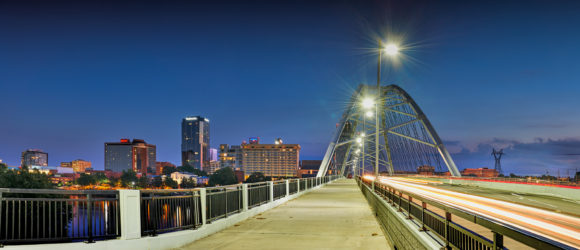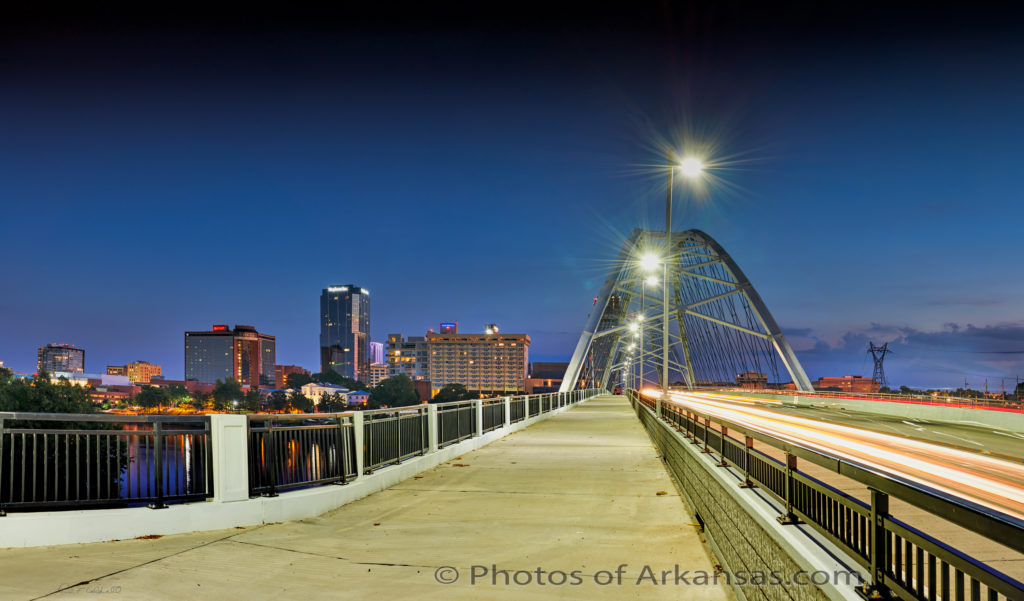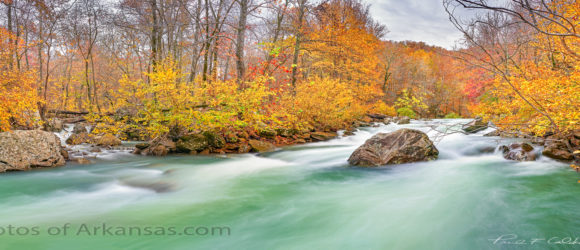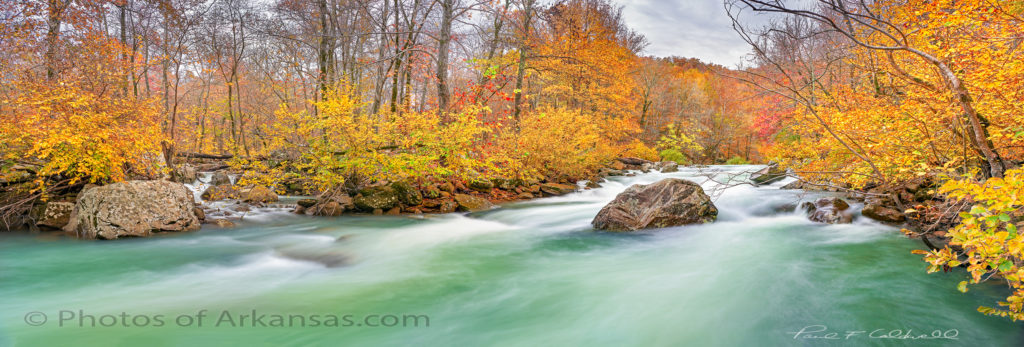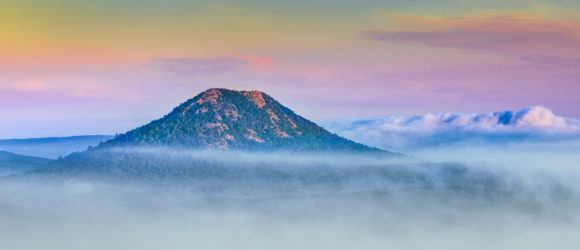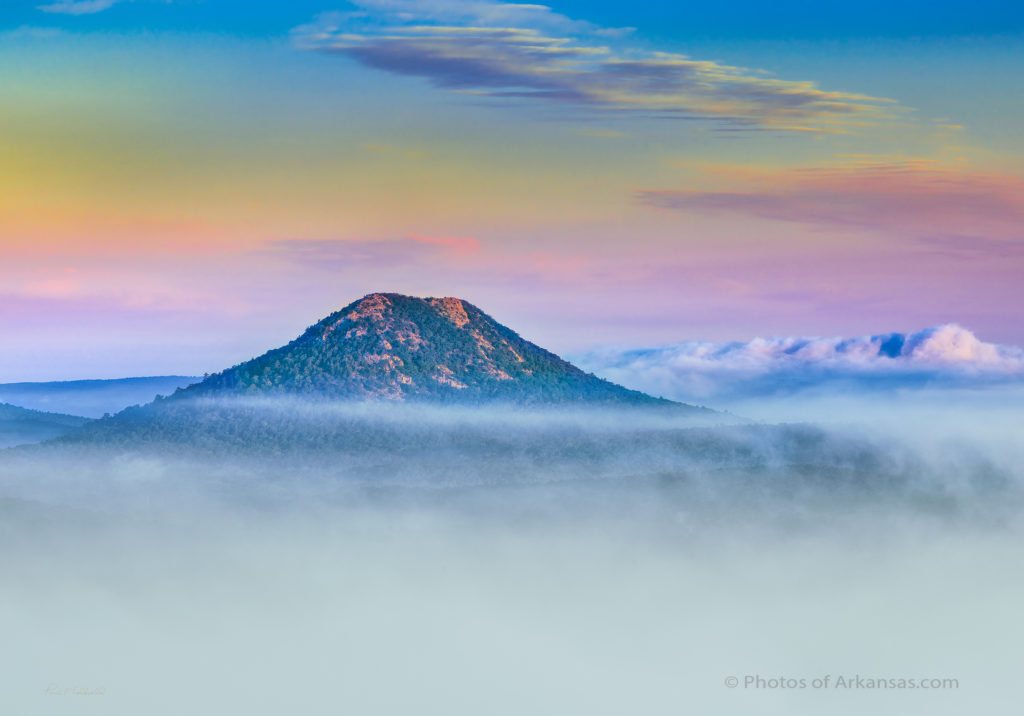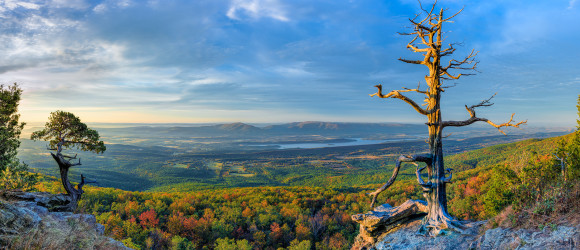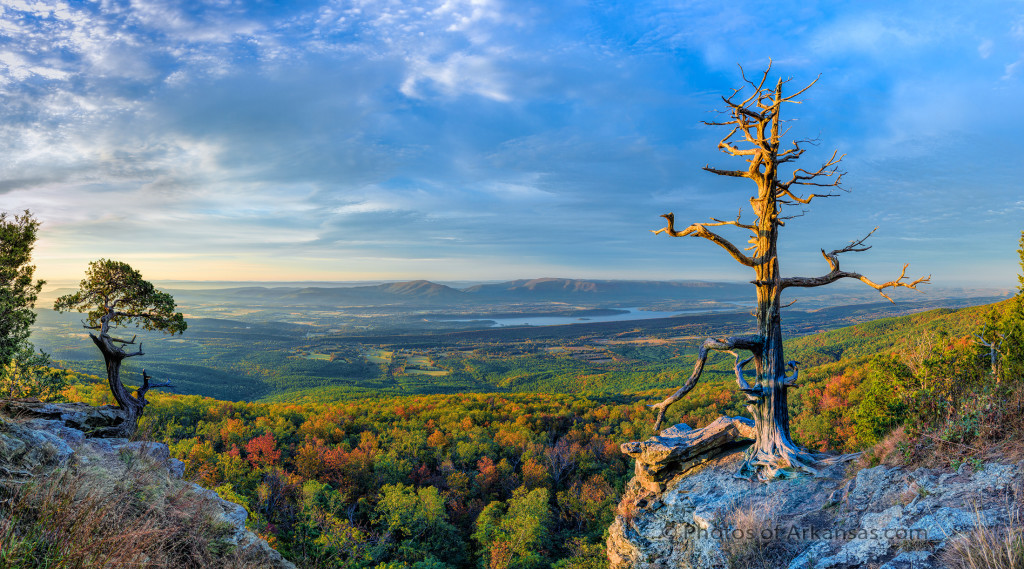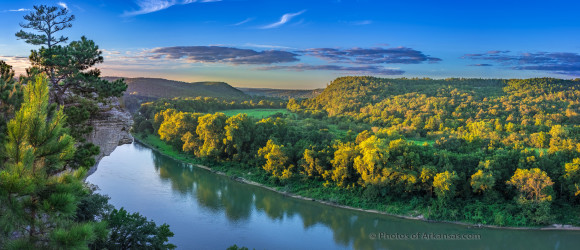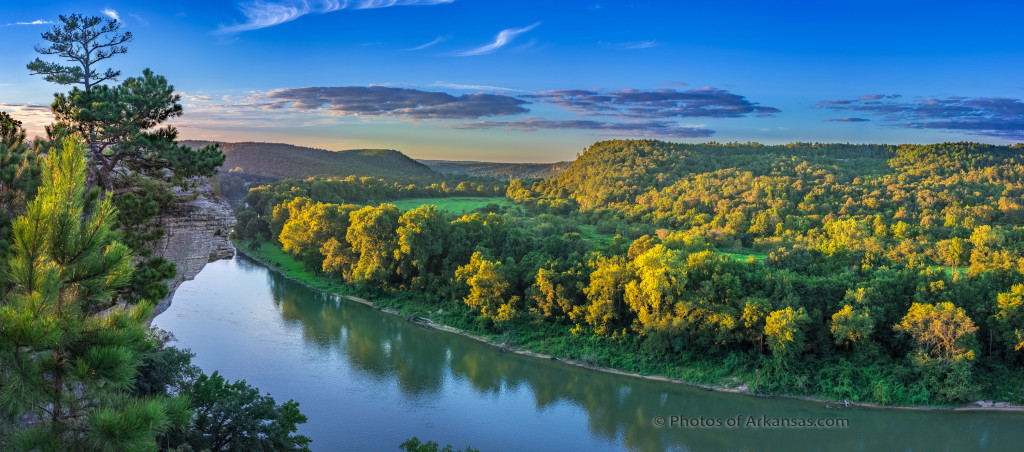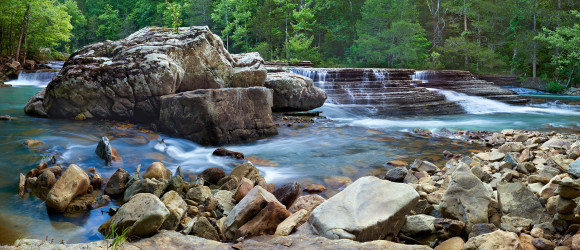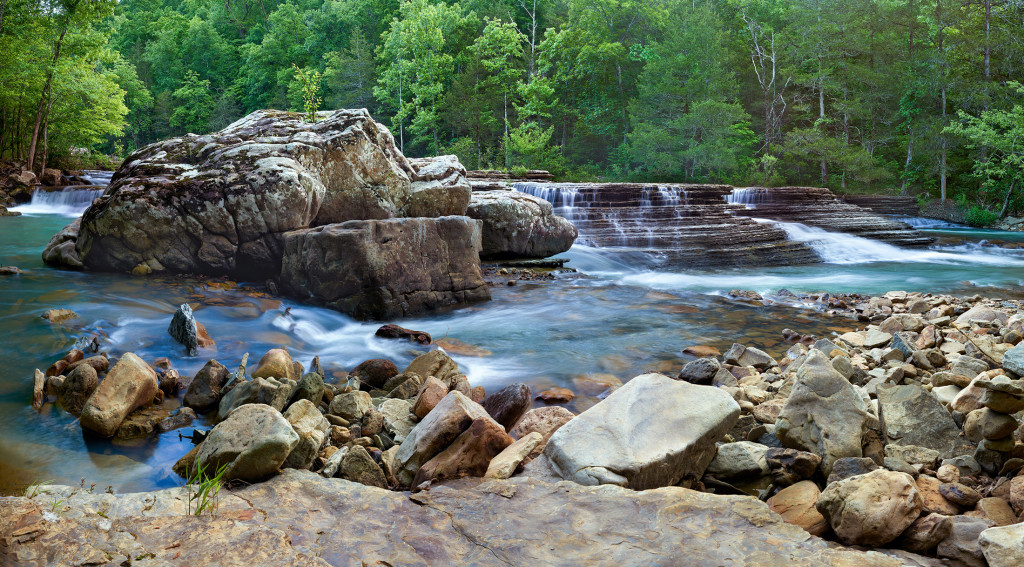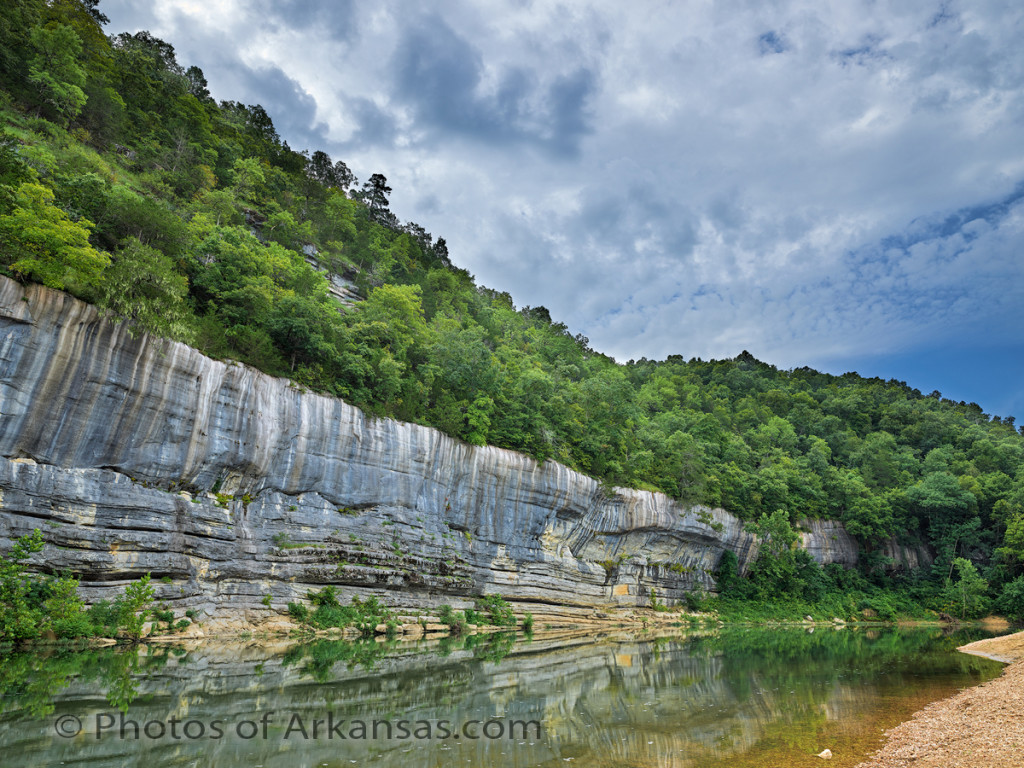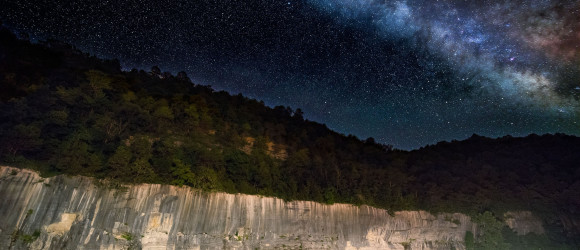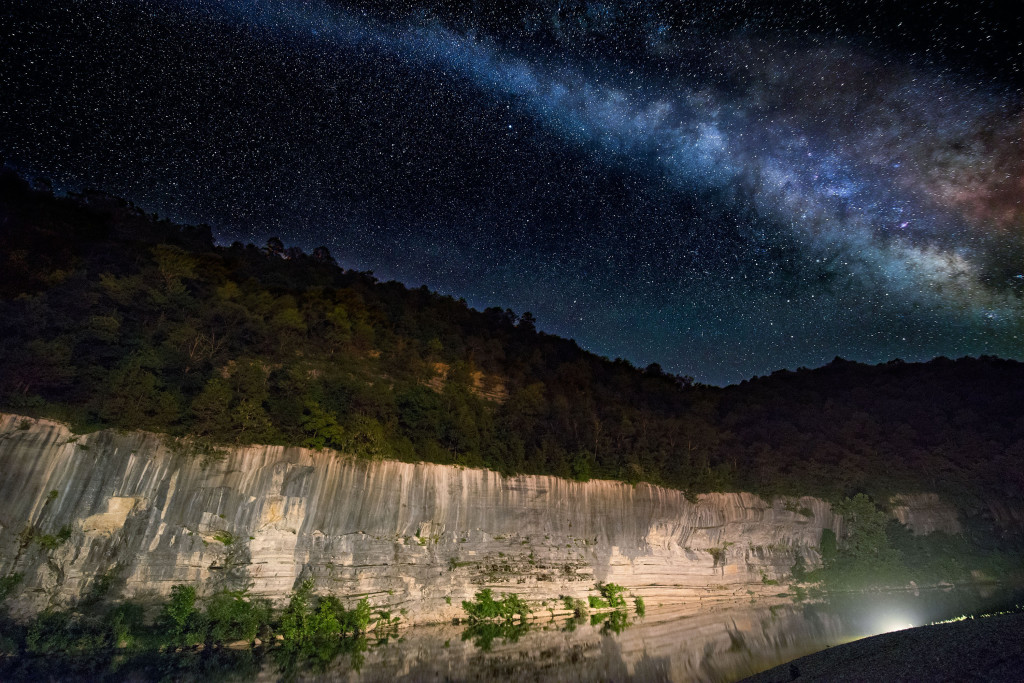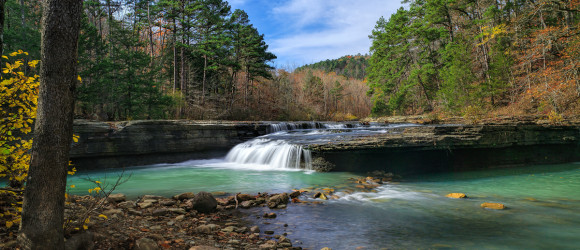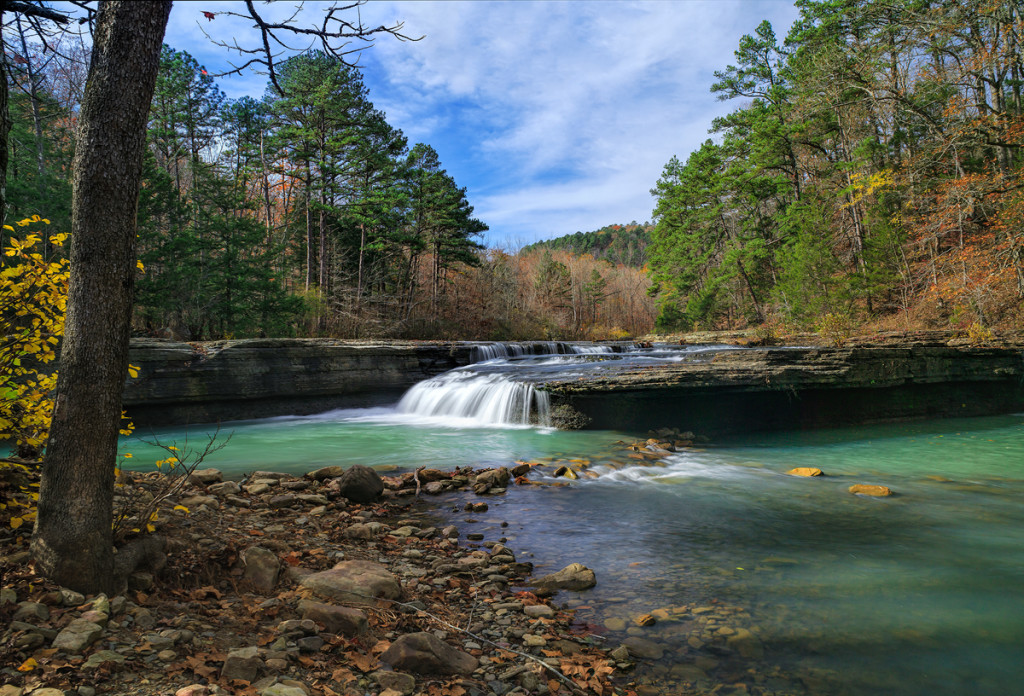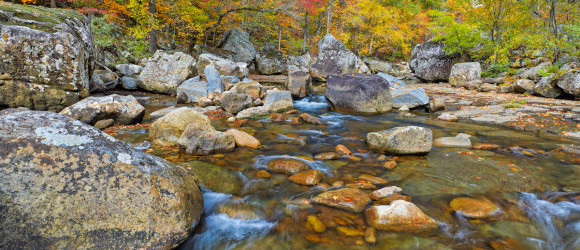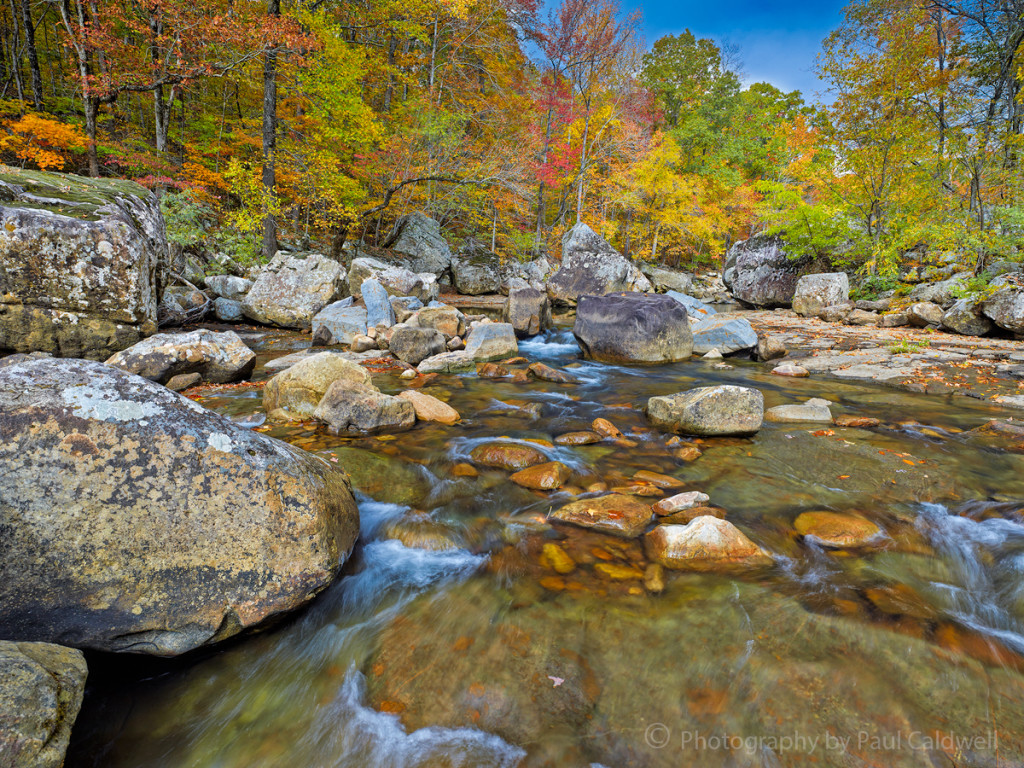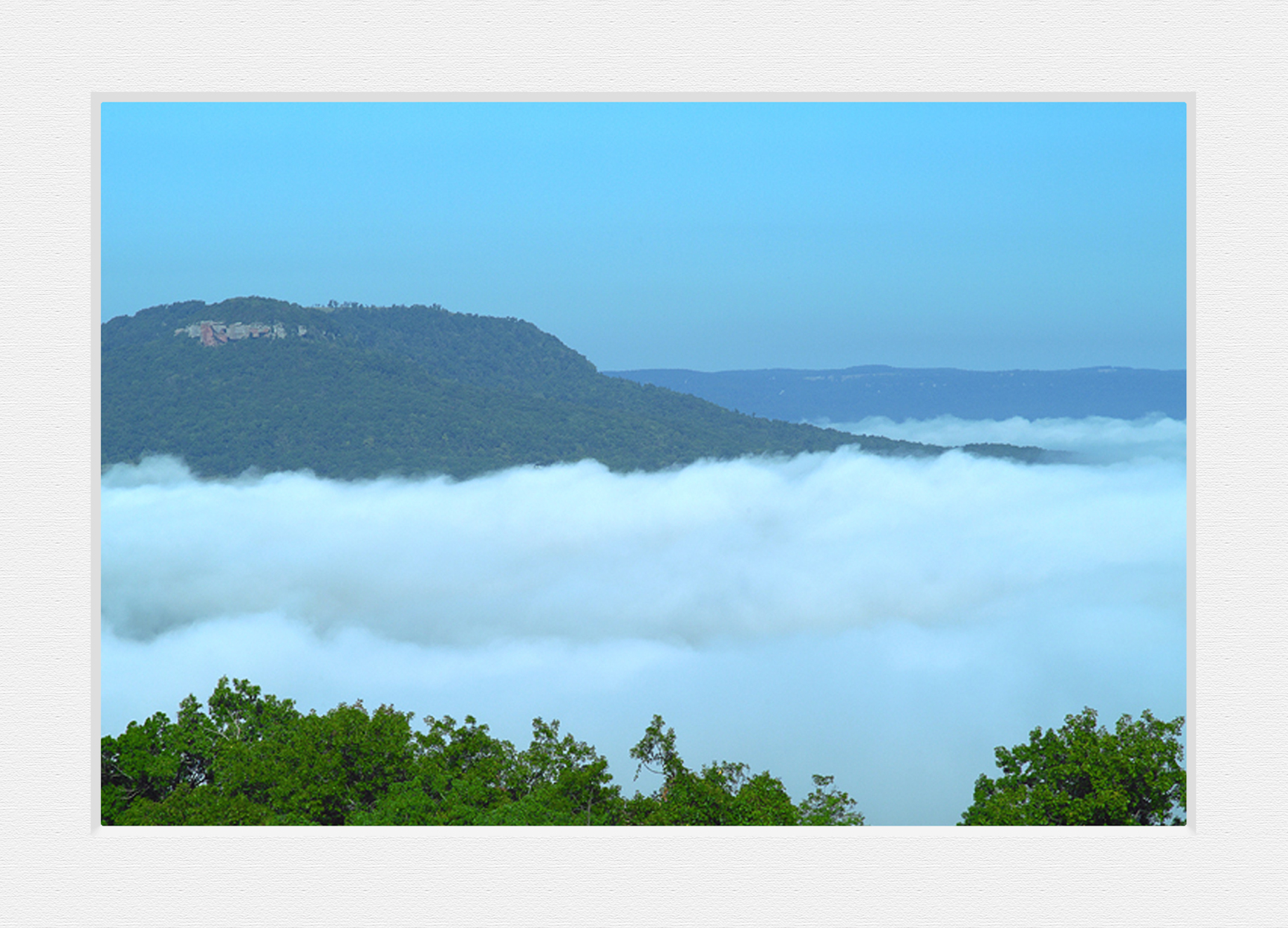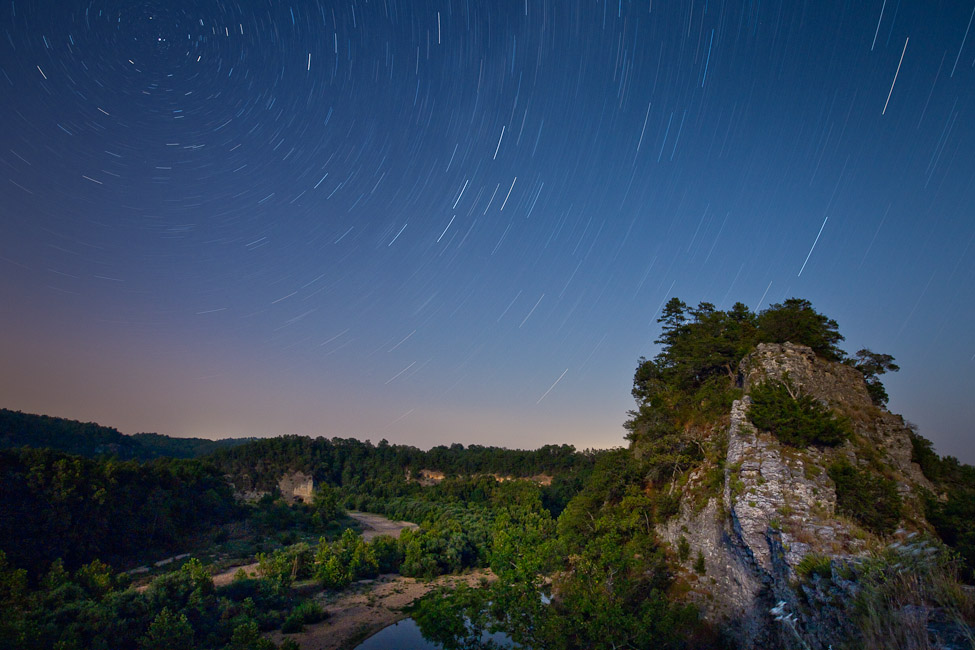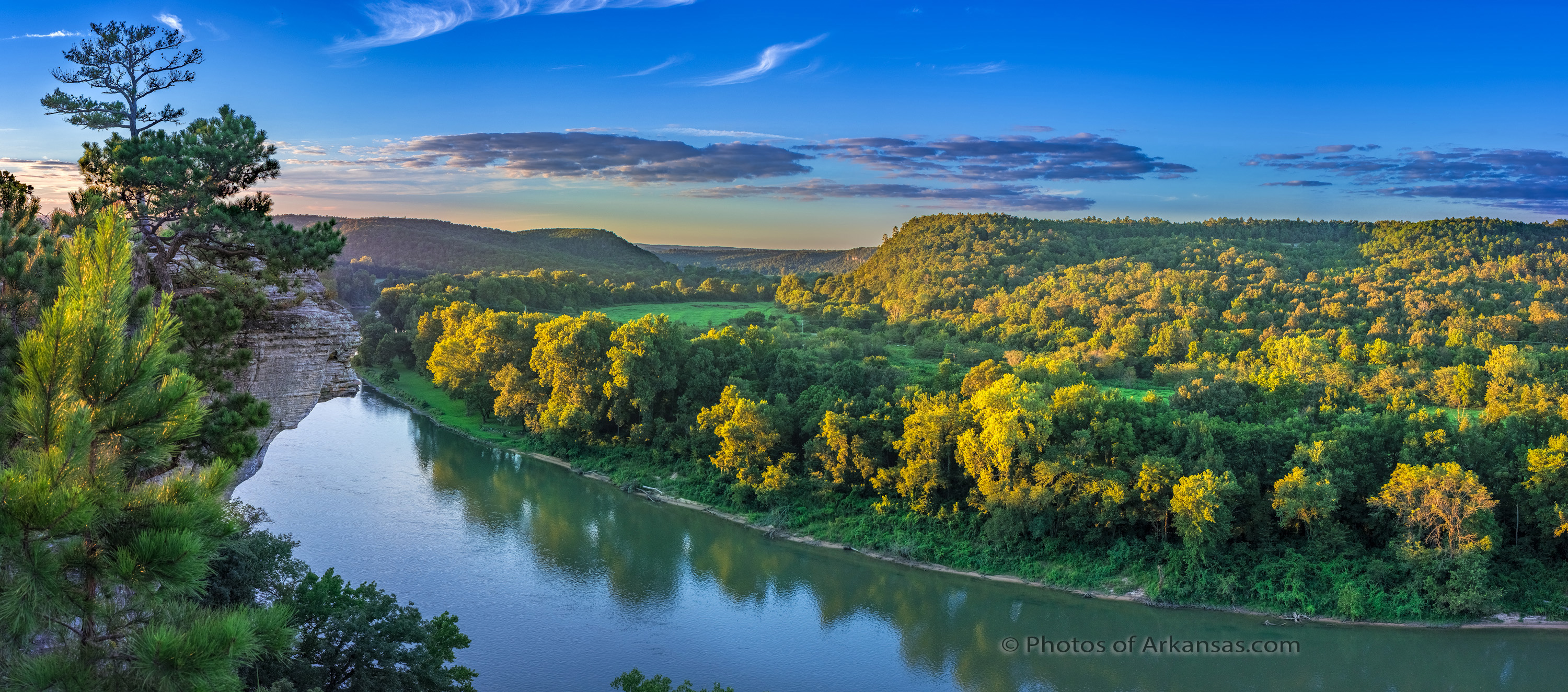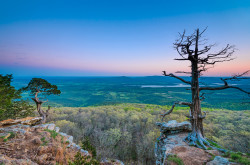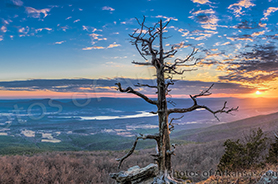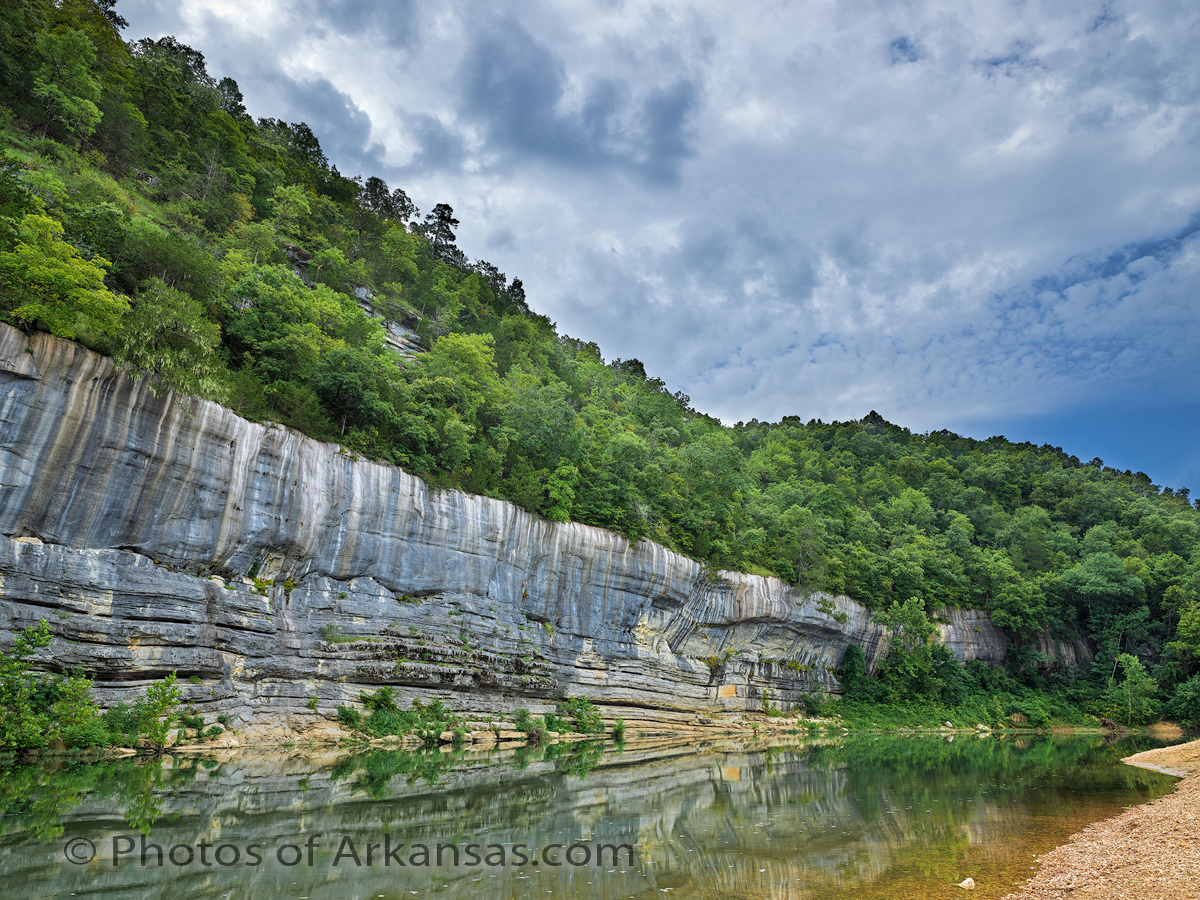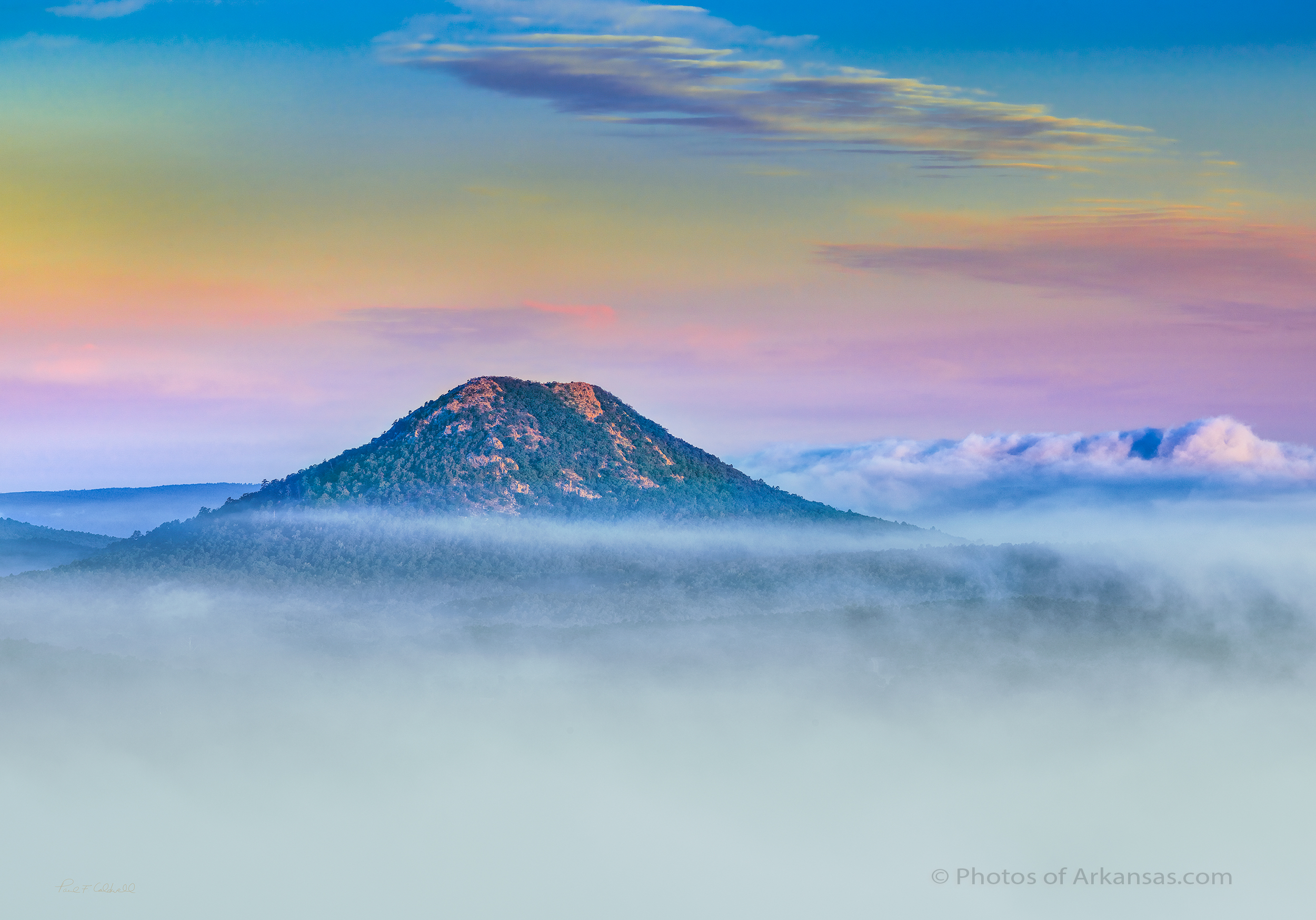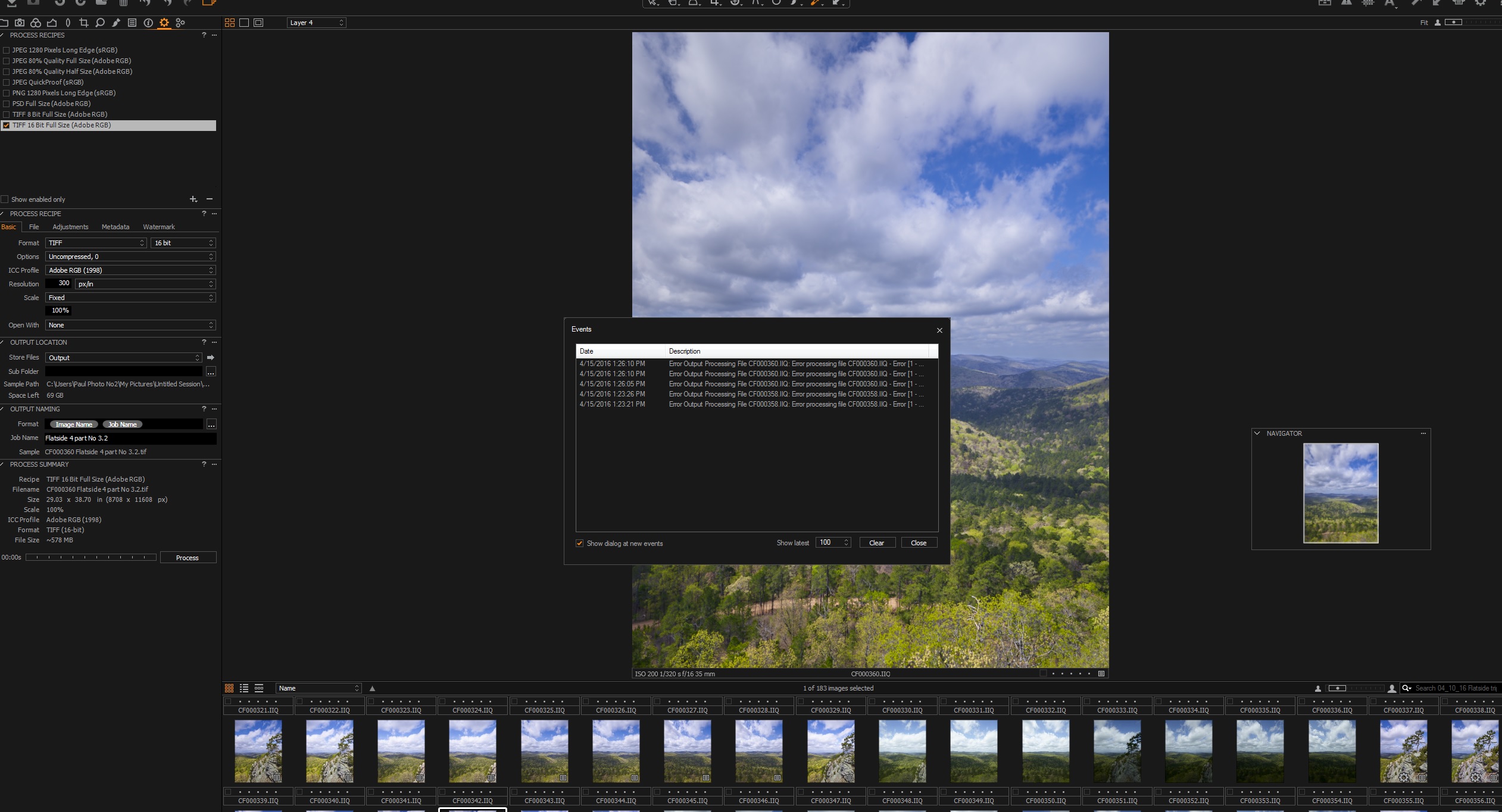03/21/19 Broadway Bridge over the Arkansas River in Little Rock–Featured Arkansas Photography
- At March 20, 2019
- By paul
- In Featured Arkansas Photography
 0
0
Taken with a Nikon D850 and 24-70 lens, 4 vertical photos, stitched into 1 landscape panorama.
The new Broadway Bridge in downtown Little Rock/North Little Rock has been a eye catching subject since its’ completion. I wanted to catch the bridge in the magic 30 minutes of light after sundown, when the sky is still showing a slight blue tint. The motion of the cars moving over the bridge turned into a painting of light due the very slow shutter speed I selected of 3 to 5 seconds. This photograph is a combination of 6 different images as I also had to bracket my shutter speed to capture the full dynamic range of the scene.
I used a tripod to keep my scene as level as possible and did not worry about a nodal point. To be honest, way too much is made of finding a nodal point with modern stitching software. You just don’t have to worry about it as much. I had no trouble getting the railing in the immediate foreground to line up at all. I used Phase One’s Capture One software to develop the images and then stitched them together in Lightroom. I also had to work a bit to get the building straightened out since my camera was pointed up slightly. I went ahead and picked a aperture of around F10 to help with the star burst from the street lights.
Written for www.photosofarkansas.com please do not reproduce this image or any of the written material without permission.
02/20/19 A Tale of two creeks Richland and Falling Water–Featured Arkansas Landscape Photography
A tale of two Creeks, Falling Water and Richland Creeks, Newton County Arkansas taken November 2018.
Taken with a Nikon D850 and 24-70 lens. Image capture in 3 horizontal images @ 24mm. I used both a CL-PL and ND filter to slow the exposure for the water.
If I had to pick a favorite spot in Arkansas, it would have to be Richland Creek. Most defiant a love/hate relationship as Richland alone has cost me more in camera gear than any other location I like to photograph. Just this fall I lost both a Nikon D850 and 24-70 lens upstream from where this shot was taken. Totally my fault and lucky for me, the creek was much lower so I was able to recover the gear and Nikon USA was able to repair it at a reasonable cost. But that’s another story.
Richland Creek is one of the fascinating creeks in Arkansas. At medium to high water levels it’s a great kayaking stream. The creek is lined with hardwoods most are 2nd generation growth as the creek was logged back in both the great depression and again in the 60’s-70’s. Most of the old growth trees are long gone but if you hike far enough upstream where the mules and loggers never reached you can still find some huge white oaks.
The creek also winds through some of the most remote parts of Arkansas, that are still remaining. Most of the watershed is now a wilderness area. There is a primitive hiking trail that works it’s way up the left side of the creek (left side facing upstream). This trail will lead all the way to Twin Falls and Richland Falls, well worth the trip.
For most the season, Richland hold water, but in the fall it’s very rare to find a good flow like the one shown in this image. Instead the creek is usually barely covering the rocks. The fall colors are getting tricky to catch also. In the past the peak display tended to be around the middle of October now the peak seems to be more in the first week of November. But the display is now hard to catch in full. Notice in this shot most of the larger trees on the left have dropped their leaves, but the willows and smaller hardwoods lining the creek are still in full color. However upstream many of the larger trees are still hold leaves. So you just have to go and see what you have.
To take this shot, I had to wade out into the creek to mid thigh deep. I found a rock that allowed me to place my tripod and camera safely above the creek. Still after the disaster I had just 1 week prior, I was a bit shaky on working in the creek. Still it was just too much not to get out and risk the shot. There was little to no wind and just as I arrived the deeply overcast sky started to breakup and gave me some nice mixed light.
Due to the high water levels, I was able to catch Falling Water Creek on the left of the shot. Falling Water Creek runs into Richland at the Richland Campground. Falling water breaks into several channels near the it’s mouth with Richland and this one is the smallest. It hardly ever flows unless Richland is running at a high level. So I was grateful to catch both creeks in the same shot with some of the most amazing fall color I have seen on the creek.
Written by Paul Caldwell for www.photosofarkansas.com. Please contact the author before using any part of this in a separate publication.
06/18/18 Featured Photography–Clearing morning fog at Pinnacle Mountain
I have a great fondness for the valley of the Little Mamuelle River and Pinnacle mountain. On one side you have the river winding down to the Arkansas River and then across the mountain is Lake Mamuelle. The distinctive shape of Pinnacle makes many feel that Arkansas has a volcano, but no the top is really two separate peaks. Pinnacle is around 650 feet tall and on most mornings where there is fog, you will see the just the top of the mountain poking out. This day was unique since there was a large amount of fog over Lake Mamuelle, which was billowing up like a cloud bank. As the sun rose up, the sky was painted in a wonderful separation of pink to light blue and the sun hitting the face of the mountain just added to the scene.
I used my Phase One IQ3100 for this shot. I was using a tripod and the Phase One 75-150mm lens. However I still cropped into the shot at least by one third as I just wanted to have the mountain by itself. I used Capture One software to work up the raw file and then tweaked the final look and feel in Lightroom and Topaz.
Pinnacle is a great climb for those in good shape, you can climb it from either side from fully maintained trails.
written for www.photosofarkansas.com by Paul Caldwell. This article is copy write protected, please contact me for permission to reprint.
10/14/16 Featured Arkansas Landscape Photography–Sunrise from the summit of Mt. Magazine
Taken with a Nikon D810 and 14-24 Lens, @ 24mm in 3 vertical shots, stitched together in Lightroom
The view from the summit of Mt. Magazine offers some amazing vistas, and one of the best is looking out to the due south towards Blue Mt. Lake and Blue Mountain behind it. This shot was taken last year, in late October and I was able to catch the rising sun hitting the rock and old tree in the foreground. Mt. Magazine is the highest place in Arkansas and has a lot to offer the visitor. There is a wonderful lodge where you can spend the night and enjoy a great meal after hiking around on some of the trails. The area is also a favorite for rock climbing and hang gliding.
I like to work this particular spot on Mt. Magazine year round, but the spring and fall are my favorite times. The sun will only come into the frame during December and January, but you can still get great photographs during the rest of the year. The play of light is amazing here.
Mt. Magazine’s summit is 2,700 feet high, and is the highest place in Arkansas. You can see for many miles off in pretty much any direction. The lodge offers a higher vantage point so when you visit make sure stop by.
The view from Mt. Magazine’s north side is just as impressive, so make a point of driving over to that side also. There is a one way drive which has several pull outs for viewing. During the fall you can expect a lot of traffic and a bit of congestion, especially during the weekends. The lodge will be booked up a year in advance for the best dates in the fall so plan accordingly.
This image was taken with aid of a tripod, in 3 vertical segments with a Nikon D810 and 14-24 lens. I used the 24mm focal length and F8 with the base ISO. I did not use a polarizer since I was panning across the scene and knew that would cause problems with composition later. I used Lightroom to work on the raw files, and also to make the panorama. The fall colors were just a few days before peak when this image was taken.
09/22/16 Featured Arkansas Landscape Photography–Sunset at Calico Rock on the White River
Taken with a Fuji X-Pro2, ISO 400, 35mm F2.0 lens, at F9, Panorama taken in 4 vertical images, each segment 3 exposures for a total of 12. Worked up in Adobe LR
Calico Rock, is one of the more interesting spots on the White River in Arkansas. You can drive right to it and when you arrive, you have a sweeping view of one of the larger bends of the White River. The bluff is about 150 feet above the river and you really cannot see much of the bluff itself. However there is one vantage spot where you can look to the west an there is a small out cropping that adds a lot to the photograph. Many call this “little Hawksbill Craig” after the larger feature up on the Buffalo River. However I just like to photograph the valley. If you look downstream, you will see the town of Calico Rock on the left hand bank of the river.
This shot was taken in a series of vertical segments, 4 total and for each segment I exposed 3 images. I then worked each of the 3 shots into a HDR balanced image in Lightroom. After that, I took the final 4 images and created a panorama. It’s very important to realize that you do not want to do any work on the individual HDR segments before the panorama merge. I prefer to use the boundary warp feature of Lightroom also as most of panoramas in taken like this will only work in a spherical format and thus your top and bottom edges will have some problems.
The Fuji X-Pro2 makes this very easy with it’s automatic bracketing shutter, where you only have to press the shutter once to fire all 3 brackets.
I have found that Fuji made some very good positive changes to the dynamic range of the X-Pro2 as can be seen in this image. Also Adobe must have done a bit of tweaking to their X-trans conversion for the X-Pro2.
You can get to Calico Rock from Little Rock, in about 3 hours and the drive is quite beautiful.
09/21/16 Featured Arkansas landscape photography–6 finger falls on Falling Water Creek
Taken with a Phase One IQ100 and 35mm LS lens, 2 part horizontal pano. Taken in 4 shots to merge later for foreground and background in Helicon Focus
Arkansas has many great streams to hike but one of the best is Falling Water Creek, which is well named as it has a large number of waterfalls it’s entire length before emptying into Richland Creek. Falling water creek has an upper and lower half, and some of the best spots to photograph are on the lower half. There you will find creek wide ledges like 6 finger falls. 6 finger falls, named for the cut outs the creek has made in the ledge, is quite a wonder. It offers great photographic opportunities year round but is best in the fall and spring. You will be lucky to find any water in the creek in the fall and if you do consider yourself lucky. The banks are lined with deciduous trees that offer a great display of fall color.
You will also like the fact that for most of it’s length, falling water creek has a forest service road that parallels it’s length and so offers quick access. This of course means in Arkansas you can expect to find all types of folks here on a good weekend, so plan your trip during the week if at all possible. The forest road is number 1205. Heading due north on the road, falling water creek will be on your right for the upper half, and then after you cross it on the left. For a portion of it’s length, the Ozark Highland trail is just above the road on the right, below the bridge. This is great day hike also.
Make sure to include a trip to the mouth of falling water creek at Richland Creek campground. Richland is the crown jewel of creeks in Arkansas and is also protected as a Wilderness Area, so you can enjoy a day without hearing a 4 wheeler.
08/21/16 Featured Arkansas Landscape Photography–Storm Clouds over Buffalo Point, Buffalo National River Arkansas
Taken with a Phase One IQ100 and Phase One XF/35LS lens, at ISO 100, F12 for 1/40 of a second on tripod, single exposure.
This was taken back in early August 2016 on the Buffalo River in Northwest Arkansas. This part of the river is known as Buffalo Point, and is one of the more popular spots on the river. It features one of the larger campgrounds on the Buffalo along with hundreds of miles of hiking trails. Within 9 miles of Buffalo Point, you can driver over to Rush Arkansas which is an old mining town which dates back to around 1917. There is not much left standing at Rush, but it still offers some nice hiking.
This image shows just how fast conditions can change. I walked down to the river before sunrise. This particular bluff is on the east side of the river, thus will not get any sunlight until mid day. It’s a great spot to catch a sunset if the clouds lineup, but you also can expect to find hundreds of people wandering around the beach which just add confusion to both the scene and water. On this morning I was hoping to catch the area to myself, and for about a magic 40 minutes I had just that. There was almost no wind blowing, so I also was able to get a very nice reflection of the bluff. This bluff is about 80 feet tall and the face about 35 feet or so and it’s one of the classic Ozark bluffs made 100% from limestone so you can expect to get some interesting color from the rock.
I worked the area up and downstream, but this spot was the best as a early morning storm rolled in. When I first arrived there were no clouds in the sky at all just a bit of river fog, but within 30 minutes the top of an old thunderhead came over the river and really added to the shot. The heat and humidity were intense but the photographic opportunities were excellent.
This is single exposure from an IQ100 Phase One digital back and I have to say that the overall dynamic range of this back is impressive. The ability to finally cover a shot with just one exposure, knowing that you have room to work up shadows without a bracketing series of exposures is a great feature and long overdue from Phase One.
08/08/16 Featured Arkansas Landscape Photography–Milky Way over Buffalo Point, Buffalo National River
Taken with a Pentax K1 and 15-30mm lens @ 15mm and F 3.2 ISO 3200 for 2 minutes using the Pentax Astrotracer function in camera.
This was my first test for night photography with the Pentax K1, and overall I was pleased with the results from the Astrotracer feature in camera. This photograph is a combo from a 2 minute Astrotracer shot for the MilkyWay, and several different shots for the foreground at various times. I used a small lantern down by the bluff to add some local illumination.
Chris Kennedy and I worked for about 2 hours, starting with a very clear night sky and temperatures around 89 degrees with 100% humidity. 2 hours later the temperature was about the same, so I was sweating just standing around waiting on the camera. But there was little to no wind so I was able to pull a nice reflection of the bluff on the river and if there had been a bit more water or a better angle by me, I might have gotten a Milky Way reflection.
Buffalo Point is one of the more popular spots on the Buffalo River, and the only campground with full electric hookups, so it will always be crowded in the summer months. You can either reserve a campground in the lower camping loops or you can try to get a spot in loop A, where it is always first come first serve, and loop A is the original WPA worked sites. I hope to get back to work this place in fall, both for the Milky Way and later on for Star trails. Star Trails will be a bit more difficult due to the location of the moon and due north.
Paul Caldwell
11/12/15 Featured Arkansas Landscape Photography–Haw Creek falls in Autumn
Taken with a Canon 1ds MkI, and and Canon 24-70 lens, iso 200.
I had to dig back a few years to find this, as it goes back to 2004, but since Arkansas had such a terrible fall in 2015 I have found myself doing this a lot lately. Haw Creek has some wonderful fall color displays but catching the falls with water in them and fall colors is one of the harder things to do. On the afternoon I caught this shot, I have been driving around looking for late fall color, stopping at both Falling Water Falls, and Richland Creek, but neither of them had much water. For some reason the rain that fell the night before did hit the Haw Creek drainage harder and the falls were running. I almost did not make the driver over from Lurton on Hwy 7, but was glad I did.
I was able to setup and get this shot before the sun moved over to the lower left of the frame. As it was the sun was perfect hitting on both the falls and the pool below. Note the green color, which is common to all Arkansas Ozark streams, but seems to be more prominent in the fall and winter. I have always assumed it’s due to the limestone content in the water.
I shot this photograph in 3 separate segments as I was wanting to get more overall resolution. The older Canon 1ds MKI only had 11MP and that’s just not enough for a large print. Now that Lightroom has added a stitching solution, I am going back to a lot my older Canon work, either from the 1ds or 1ds MKII as both cameras captured great color, but I was using either a totally manual stitching method or a Zork adapter. Using Lightroom’s new solution makes for a much faster stitching process and you are left with a dng file. This allows you still use Lightroom’s excellent tools on the image as if it was a raw file.
This year, the colors were terrible at Haw Creek, mainly brown. The water level was actually pretty good for a few day’s and I ran into a few photographers up there, but I didn’t even get my camera out. The trees just didn’t have any life to them.
Early fall morning along Richland Creek–05/29/15 Featured Arkansas Landscape Photography
- At May 29, 2015
- By paul
- In Featured Arkansas Photography
 0
0
Taken with a Phase One IQ160 and Arca rm3di camera and Rodenstock 28mm lens @ iso 50 for 1/2 second exposure.
I am a huge fan of Richland Creek, having spent at least the last 20 years or so exploring it’s vast reaches. I was lucky enough to Kayak this creek for over 10 years as that one of the best ways to get to know a creek. Richland (the name comes from the fact that the mouth of Richland near Woolum Ford on the Buffalo was excellent farming land) has some beautiful features throughout it’s length as it moves towards the Buffalo, but by far the best scenery is found in the 5 miles of the creek above Richland campground. This shot was taken on a fall morning and the sun was popping back and forth between the clouds. I was setup and waited on the best light for at least 20 minutes and only got about 2 minutes before the next bank of clouds rolled in. The level of water in the creek on this day was low but in many respects this is an excellent level for photography as you can safely stand in the middle of the creek for the best vantage points. One aspect of creek photography, if you don’t plan on getting wet, don’t bother.
This spot is directly below one of the larger rapids on Richland called, Shaw’s Folly. In this shot, look for the large rock on the upper right which is about the size of a small house. This marks the end of the rapid and all of the creek in the picture is just the run out. But in this shot you can see why I love Richland as it’s just full of huge rocks and each one has it’s own unique shape and color. The water was gin clear this day so I was able to feature some of the bottom of the creek by using a polarizer to cut the glare.

